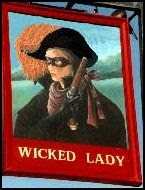Historic Sex Toys in the News!

Ok folks, I haven't posted a picture to go with this for reasons of delicacy. At least I've posted a picture of David Tennant as Casanova just for fun. Anyway, if you are of a nervous disposition or feeling particularly delicate this Monday morning my advice would be DON'T CLICK ON THIS LINK http://news.bbc.co.uk/1/hi/england/essex/8589766.stm The story is that an anonoymous bidder has paid £3,600 for a couple of "wooden items" as the BBC politely describes them, at auction. The sex toys date from the eighteenth century and are extremely rare and collectible. This is an investment opportunity, according to the auctioneer, who said: "You won't see another one in a long time."









